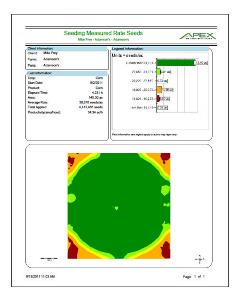Mega Menu
Mega menu is possible in BS5 but we will need to create a custom template layout for the navigation widget. The following is a hard-coded example.

Font Awesome 6
FA6+ icons will work on all widgets.
The FMH Icon box will need a new version created because the styling is broken in Bootstrap 5 templates (this has nothing to do with FA).
FMH Icon Widget
Icons can now be used in Content blocks by pasting the HTML tags from www.fontawesome.com into the HTML editor.
Here are some new icons from Font Awesome 6
face-awesome
envelopes
wheat-awn
Bootstrap Components
Code snippits from http://getbootstrap.com pasted into Content Blocks.
h1. Bootstrap heading
h2. Bootstrap heading
h3. Bootstrap heading
h4. Bootstrap heading
h5. Bootstrap heading
h6. Bootstrap heading
Nav Tabs
Nav Pills
Accordion
.accordion-body, though the transition does limit overflow.
.accordion-body, though the transition does limit overflow.
.accordion-body, though the transition does limit overflow.
Tables
| # | First | Last | Handle |
|---|---|---|---|
| 1 | Mark | Otto | @mdo |
| 2 | Jacob | Thornton | @fat |
| 3 | Larry the Bird | ||
Alerts
Image Carousel
Modals
Sitefinity Widgets
Default, out of the box, Bootstrap 5 templates available for widgets.
The navigation template used above is called Horizontal.
Navigation Widget - Tabs Template
Navigation Widget - Pills Template
Breadcrumb


List Widget - Expandable List Template
Precision Claims FAQs
List Widget - Simple List Template
Crop Claims Reminders
-
How To Report MPCI Claims
-
MPCI Claim Reporting Deadlines
-
Appraisals
-
Production Records by Unit
-
Production Delivered to a Commercial Elevator
-
Production From Precision Farming Technology Systems
-
Production Weighed and Farm Stored
-
Authorization for Load Records, Storage Structure Marking, or Combine Monitor Records
-
Fed Production
-
Quality Adjustment
-
What is a Simplified Claim?
-
What can insureds do to expedite the claim process?
List Widget - Anchor List Template
Quality Control Review FAQ
- What can an Insured do to prepare for a review?
- What can Agents do to prepare for a review?
- How does the review process begin?
Quality Control Review FAQ
What can an Insured do to prepare for a review?
Third party documentation (i.e. summary/settlement sheets from the elevator) is required when applicable and available. Insureds are expected to have available hard copy records that will 1) support the total production raised for the crop/county/year being reviewed and 2) that can demonstrate how production was kept separate between various units, practices and types (if applicable).
Insureds will also want make themselves available to meet with the quality control reviewer as the reviews will need to be completed before the claims can be processed.
What can Agents do to prepare for a review?
How does the review process begin?
Documents List - Documents List Template
Documents List - Documents List Template
| Title | Type | Size | |
| 602 KB | DownloadFMHQ Release 2 Guide | ||
| 405 KB | DownloadWFRP Checklist for Agents 2026 | ||
| 504 KB | DownloadWFRP Policy Provisions 2026 | ||
| 3231 KB | DownloadWFRP Handbook 2026 | ||
| 203 KB | DownloadECO_MCO_SCO_Coverage Comparison Flyer |
News Widget - News List Template
News list template is the only template available by default.
Crop Insurance and Grain Marketing
Crop insurance agents don’t need to be experts in grain marketing to help farmers use their crop insurance as part of a grain marketing strategy. Agents can help their customers by showing them how a policy can protect their bushels when marketing grain. Likewise, if the customer has specific goals with marketing grain, their agent can help determine the best coverage to meet those goals.
Ken Ripley explains the relationship between grain marketing and crop insurance from his perspective as a farmer and FMH Strategic Account Manager. Ripley says, “A customer should feel comfortable marketing their protected bushels. Every farmer that buys an insurance policy has the possibility to market grain. Many people don’t understand how to use it.”
Giving farmers the confidence to sell early is valuable because grain prices tend to be lowest near harvest, and many farmers risk selling grain at the bottom third of the market while waiting for prices to bounce back.
With the changing agriculture industry and global market, there are many ways a farmer can market grain including direct sales, buying a futures contract with the local co-op, or hedging future prices.
For example, say a customer is concerned about not producing enough grain to fulfill a futures contract. If the customer has a policy that protects the contracted bushels, then he or she wouldn’t need to grow the extra crop to fulfill that contract.
Or, in the instance of hail damage, the farmer would be able to negotiate with futures contract buyers and potentially move the contract into the next crop year because of the safety net of his or her policy.
Each option offers a different way to market grain, with different levels of risk and benefits. Ripley says that grain marketing works better as a long-term plan to benefit the overall farm operation. “It just depends on what flexibility you want to have with that marketing plan. Using my crop insurance-protected bushels is the starting point to determine what price I need in order to sell,” Ripley says. As a farmer, he tries to keep an eye on the seasonality of the market and have a sell-by date.
When it comes to crop insurance policies, a revenue policy is a more robust coverage option for farmers interested in grain marketing. It better protects against market fluctuations unlike a yield-only policy.
An FMH private product like RAMP can help farmers protect the bushels not covered by their MPCI policy. With the additional coverage, the farmer gains confidence to sell grain sooner, avoiding later market drops.
Agents can use their understanding of crop insurance to give the customer confidence to market grain with futures contracts, including cueing them into what bushels are protected, allowing them to make the most out of their insurance product.
Blog Posts Widget - Blog Posts Lists Template
-
Reporting Acreage with FMH Precision Solutions
Many policyholders already collect precision ag data during planting. Put that data to work to report acreage for crop insurance with FMH Precision Solutions.Full story -
Prepping Your Customers for Planting with Precision
Help your farmers use the precision data they're already collecting to simplify planting and reporting this spring.Full story -
Q&A with an FMH Precision Tech Specialist
Learn how our expert staff supports agents getting started with Precision SolutionsFull story -
Traditional vs. Precision Claims: What Are the Differences?
Oct 16, 2023, 14:01 by Eric RicheLearn how Precision Solutions can lead to simplified claims and easier APH reviews for your customers.Full story -
See How Precision Solutions Saves Premium and Improves APH
See the difference with examples from our recent FieldView™ Partner Connect webinar.Full story



